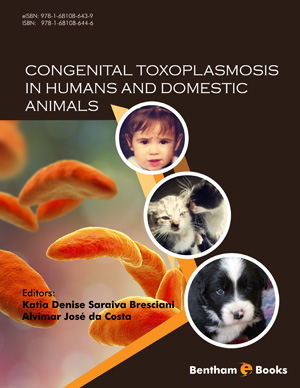Abstract
Toxoplasma gondii is an obligate intracellular parasite, and its infectious stages are: sporozoites, tachyzoites and bradyzoites in tissue cysts. The life cycle of T. gondii is a heteroxenous system that alternates between sexual and asexual stages. Ingestion of raw or undercooked meat with cysts, sporulated oocysts and congenital infections is the principal route of infection. T. gondii usually parasitizes the host without producing clinical signs. However, the infection leads to several neurological and ocular problems, and lead immunosuppressed individuals to severe clinical conditions. For livestock animals, the infection leads to abortion and neonate mortality. The prevalence of antibodies is reported worldwide in humans and animals. Toxoplasmosis is considered one of the most important parasitic infections of human. For diagnosis and epidemiologic studies, several methods are used, for instance: serology to detect antibodies anti-T.gondii, parasite isolation in laboratory animals (bioassays) or protozoan observation through direct molecular methods to detect the DNA of T. gondii. Recent studies on T. gondii virulence and genotyping using standard methods revealed different results in South America, Africa and Asia. These results were different from those observed in North America and Europe.
Keywords: Apicomplexa, Bioassays, Coccidian parasite, Diagnosis, Epidemiology, Genotyping, Isolate, Isolation, Life cycle, Molecular epidemiology, Protozoan, PCR-RFLP, q_PCR, Serology, Toxoplasmosis, Virulence, Zoonosis.






















